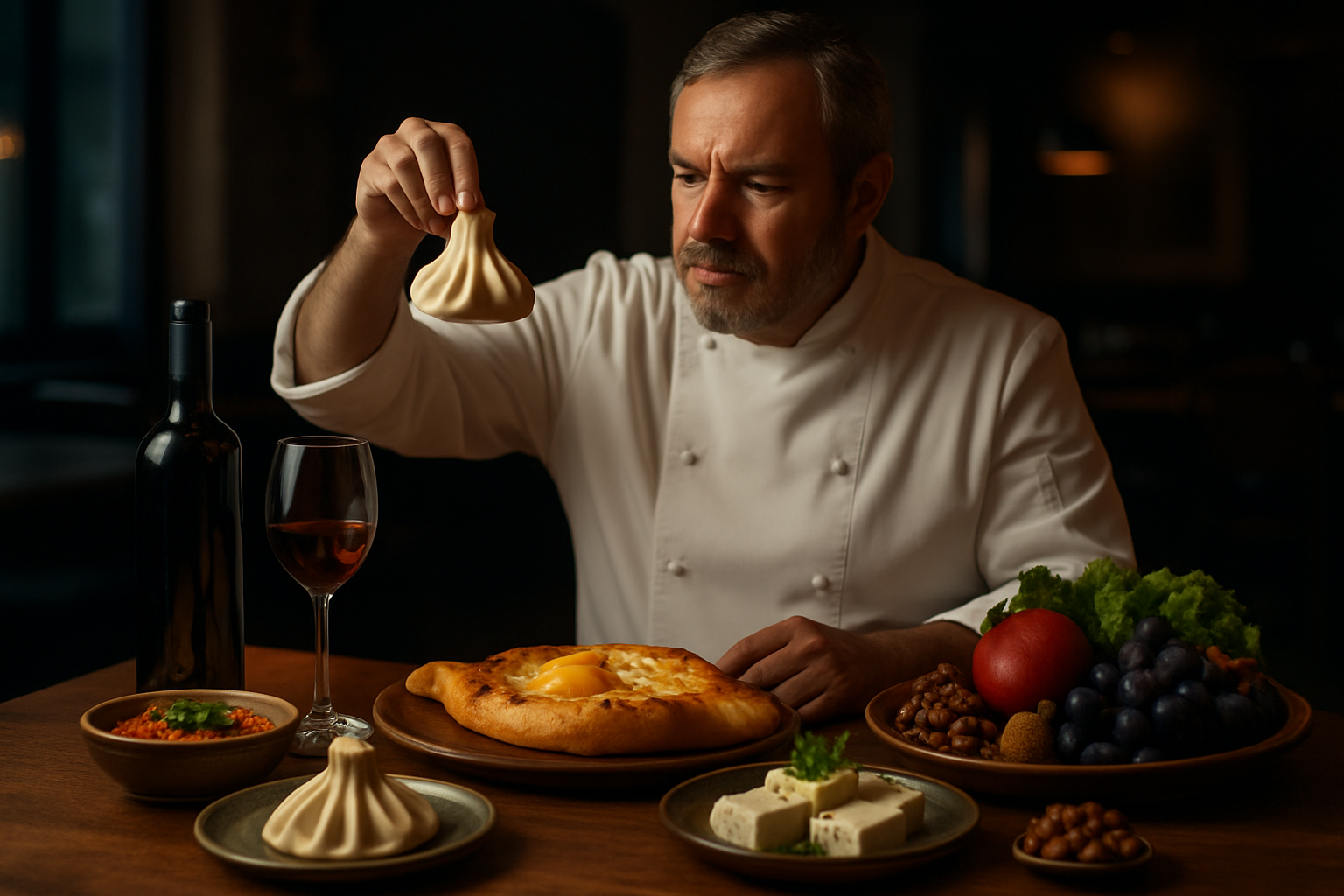Culinary Alchemy: The Art of Flavor Pairing
Discover the magic behind unexpected flavor combinations that elevate dishes from ordinary to extraordinary. This culinary journey explores the science and creativity of pairing ingredients, unlocking a world of taste sensations that will transform your cooking and dining experiences. From sweet and savory fusions to umami-rich combinations, prepare to embark on a flavorful adventure that will inspire your next culinary masterpiece.

The concept of flavor pairing is rooted in the principle that foods with similar flavor compounds often complement each other well. This explains why classic combinations like tomato and basil or chocolate and coffee work so harmoniously. However, the true art of flavor pairing lies in discovering unexpected matches that challenge our preconceptions and create entirely new taste experiences.
Chefs and food scientists often use tools like flavor wheels and aroma databases to explore potential pairings. These resources map out the chemical components of different ingredients, allowing for more precise and innovative combinations. By understanding the underlying chemistry, culinary artists can create dishes that are not only delicious but also scientifically intriguing.
Sweet Meets Savory: A Delicious Dichotomy
One of the most exciting frontiers in flavor pairing is the intersection of sweet and savory. This combination has been gaining popularity in recent years, with chefs pushing the boundaries of traditional taste profiles. The key to successful sweet and savory pairings lies in finding the perfect balance between contrasting flavors.
Consider the classic combination of prosciutto and melon. The salty, umami-rich prosciutto creates a delightful contrast with the sweet, juicy melon. This pairing works because the saltiness of the ham enhances the fruit’s natural sweetness, while the melon’s refreshing quality cuts through the richness of the meat.
Another intriguing sweet and savory pairing is the combination of dark chocolate and blue cheese. While it may sound unusual, the sharp, tangy notes of the cheese complement the bittersweet complexity of dark chocolate, creating a sophisticated flavor profile that is both surprising and satisfying.
Umami: The Secret Weapon of Flavor Fusion
Umami, often described as the fifth taste, plays a crucial role in creating depth and complexity in flavor pairings. This savory, meaty taste is found in ingredients rich in glutamates, such as aged cheeses, mushrooms, and fermented foods. When combined strategically with other flavors, umami can elevate a dish to new heights.
One classic umami pairing is the combination of Parmesan cheese and mushrooms. Both ingredients are rich in glutamates, creating a powerful umami synergy that adds depth and richness to dishes. This pairing is often found in risottos, pasta dishes, and savory tarts, where the earthy mushrooms and nutty cheese create a harmonious blend of flavors.
Another interesting umami combination is the pairing of miso with caramel. The salty, fermented flavor of miso adds complexity to the sweet caramel, resulting in a unique taste that is both savory and indulgent. This pairing has become popular in desserts, particularly in ice creams and pastries, where it offers a sophisticated twist on traditional sweet treats.
Global Fusion: Cross-Cultural Flavor Adventures
As our culinary world becomes increasingly interconnected, chefs are exploring flavor pairings that cross cultural boundaries. This global fusion approach combines ingredients and techniques from different cuisines to create innovative and exciting flavor profiles.
One example of this trend is the combination of Mexican and Southeast Asian flavors. The use of Thai basil and lemongrass in a traditional Mexican salsa creates a bright, aromatic twist on a familiar dish. Similarly, adding tamarind to a classic mole sauce brings a tangy, fruity note that complements the rich, complex flavors of the Mexican staple.
Another interesting cross-cultural pairing is the fusion of Middle Eastern and Mediterranean flavors. The combination of za’atar spice blend with feta cheese, for instance, creates a harmonious blend of herbaceous and tangy flavors that works well in salads, flatbreads, and dips.
The Future of Flavor: Innovative Techniques and Ingredients
As we look to the future of flavor pairing, innovative techniques and novel ingredients are opening up new possibilities. Molecular gastronomy, for example, allows chefs to manipulate the texture and form of ingredients, creating unexpected flavor combinations and presentations.
One exciting development in this field is the use of edible flowers in savory dishes. Flowers like nasturtiums, with their peppery flavor, can add a unique dimension to salads and seafood dishes. Similarly, the floral notes of lavender can complement gamey meats like lamb, creating a sophisticated and aromatic pairing.
Another emerging trend is the use of algae and seaweed in unexpected ways. These ingredients, rich in umami and minerals, are being incorporated into desserts and baked goods, adding depth and complexity to sweet dishes.
Flavor Pairing Tips & Facts
• The “flavor pairing hypothesis” suggests that ingredients sharing flavor compounds are more likely to taste good together.
• Certain herbs and spices, like cilantro and cumin, can bridge flavors across different cuisines.
• Bitter flavors can be balanced by pairing them with sweet or fatty ingredients.
• Acidic ingredients like citrus fruits or vinegar can brighten and enhance other flavors in a dish.
• The temperature of food can affect how we perceive its flavor, influencing pairing choices.
• Visual presentation can impact our perception of flavor, making color an important consideration in pairings.
• Texture contrasts, such as crunchy with creamy, can enhance the overall eating experience.
As we conclude our exploration of flavor pairing, it’s clear that this culinary art form offers endless possibilities for creativity and innovation. By understanding the science behind taste and embracing unexpected combinations, we can transform our cooking and dining experiences. Whether you’re a professional chef or a home cook, experimenting with flavor pairings can open up a world of delicious discoveries. So, the next time you’re in the kitchen, don’t be afraid to push the boundaries and create your own unique flavor symphony.




